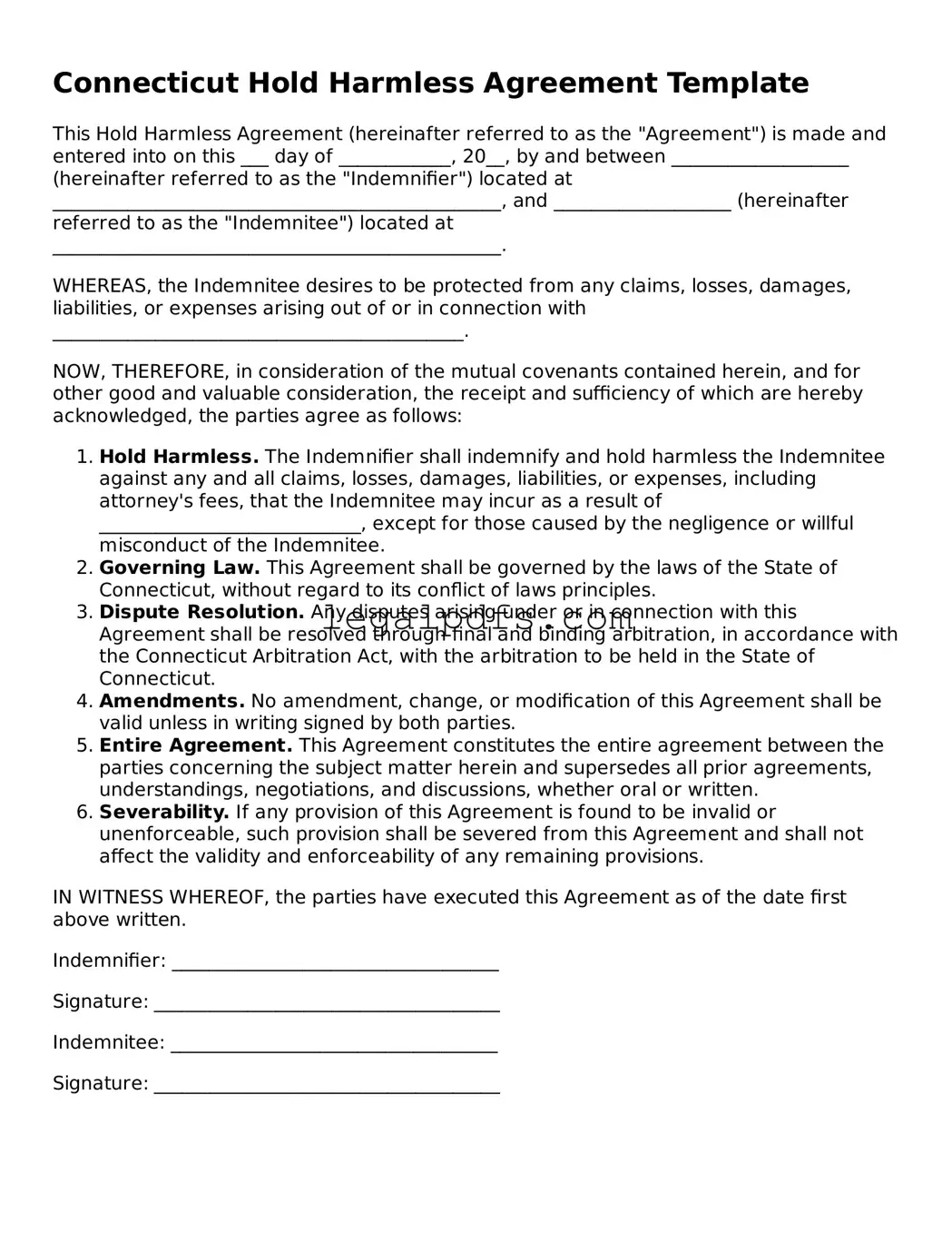What is a Connecticut Hold Harmless Agreement?
A Connecticut Hold Harmless Agreement is a legal document used to protect one party from financial loss or liability, should accidents or damages occur during the course of an agreement or project. This agreement is particularly common in construction, real estate, and event planning, but can be used in various other scenarios where protection from potential legal claims is desired.
Who needs a Connecticut Hold Harmless Agreement?
Any individual or business entity in Connecticut engaging in activities that pose potential risk of harm, liability, property damage, or financial loss should consider using a Hold Harmless Agreement. This includes contractors, service providers, property owners, and event organizers, among others.
Are Hold Harmless Agreements enforceable in Connecticut?
Yes, Hold Harmless Agreements are generally enforceable in Connecticut. However, the enforceability can depend on the specific circumstances, including the wording of the agreement and whether the agreement is deemed fair and not contrary to public policy. It is crucial to ensure the agreement is well-drafted to avoid potential enforceability issues.
How should a Connecticut Hold Harmless Agreement be structured?
A properly structured Connecticut Hold Harmless Agreement should clearly identify all parties involved, describe the scope of activities covered, detail the liabilities and obligations being transferred, and be signed by all relevant parties. It should also explicitly state the duration for which the agreement remains in effect.
Can a Connecticut Hold Harmless Agreement cover all types of liability?
While a Connecticut Hold Harmless Agreement can cover a wide range of liabilities, including personal injury and property damage, there are limitations. For instance, it cannot absolve a party from liability for their own gross negligence or intentional misconduct.
What are the legal requirements for a Connecticut Hold Harmless Agreement to be valid?
To be valid in Connecticut, a Hold Harmless Agreement must be clearly written, entered into by competent parties, and involve consideration (something of value exchanged between the parties). It should not cover illegal activities or go against public policy. Ensuring the agreement complies with these requirements is crucial for its enforceability.
Does a Connecticut Hold Harmless Agreement need to be notarized?
While notarization is not a legal requirement for a Connecticut Hold Harmless Agreement to be valid, having the document notarized can add an extra layer of authenticity. Notarization can be particularly helpful if the agreement's validity is later questioned in court.
How can one terminate a Connecticut Hold Harmless Agreement?
Termination of a Connecticut Hold Harmless Agreement typically depends on the terms outlined within the agreement itself. Common termination scenarios include the completion of the activity or project for which the agreement was drafted, mutual agreement by all parties to end the agreement, or expiration of the agreement after a specified period. It is important to include specific termination conditions in the agreement to avoid disputes.
